Surviving in the forest demands more than just basic camping knowledge – it requires a sophisticated understanding of nature’s language and the ability to make split-second decisions that could mean the difference between life and death. Whether you’re an experienced outdoorsperson or a curious beginner, mastering forest survival skills equips you with the confidence to handle unexpected wilderness challenges.
In Ontario’s diverse forests, from the boreal wilderness of the north to the mixed woodlands of the south, survival situations can arise without warning. A simple day hike can transform into a survival scenario when weather suddenly turns, trails become unclear, or injuries occur. Understanding fundamental survival skills isn’t just about emergency preparedness – it’s about developing a deeper connection with the natural world and becoming self-reliant in any situation.
Our comprehensive guide to forest survival skills draws from decades of wilderness expertise and real-world experience. We’ll explore essential techniques for shelter building, fire starting in wet conditions, water sourcing and purification, wild edible identification, and navigation without modern tools. These skills have been tested and refined through countless wilderness experiences and professional survival training programs.
Let’s explore how you can develop the knowledge and confidence to thrive in the forest, not just survive.
Essential Navigation Skills for Ontario’s Forests
Natural Navigation Methods
When you’re deep in Ontario’s wilderness, knowing how to find your way without modern technology can be a lifesaver. While it’s great to get some outdoor navigation practice with GPS devices, nature provides reliable directional clues that have guided travelers for centuries.
During daylight hours, the sun is your most reliable compass. Remember that it rises in the east and sets in the west. At noon, the sun is directly south (in the Northern Hemisphere), and your shadow points north. For nighttime navigation, locate the North Star by finding the Big Dipper constellation and following the two pointer stars at its edge.
Natural indicators can also help you determine direction. In Ontario, most trees grow more branches on their southern side to catch maximum sunlight. Look for moss growth, which tends to be thicker on the north side of trees and rocks where it’s shadier and moister. Spider webs typically appear on the south side of trees, where insects are more active in the warm sunlight.
Keep in mind that these natural signs work best when used in combination, as individual markers can sometimes be misleading due to local conditions.
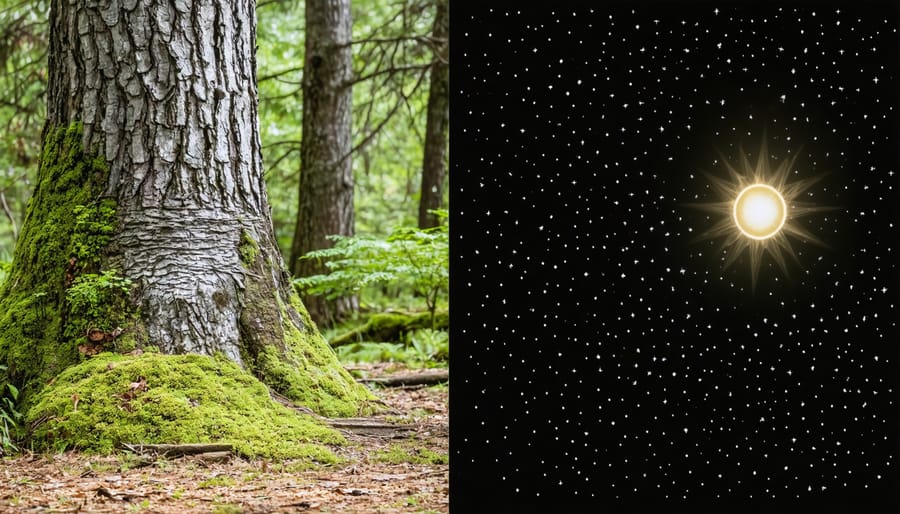
Modern Navigation Tools
While traditional navigation skills remain crucial, modern technology offers valuable tools to enhance your forest safety and exploration capabilities. A reliable compass should always be your primary navigation tool – it never runs out of battery and works in all weather conditions. Learn to read and orient both traditional and baseplate compasses, and always carry a backup.
Topographic maps are essential companions to your compass. Before heading out, familiarize yourself with map symbols, contour lines, and scale. Pro tip: Store your maps in a waterproof case and keep digital copies on your phone as backup.
Modern GPS-based navigation activities have revolutionized wilderness exploration, but remember they’re supplements, not replacements, for traditional skills. When using GPS devices, always carry spare batteries and download offline maps before your journey. Many Ontario parks now offer excellent GPS coverage, but dense forest canopy can sometimes affect signal strength.
For the tech-savvy adventurer, smartphone apps like AllTrails and Gaia GPS provide detailed trail information and real-time tracking. However, never rely solely on your phone – cold temperatures can drain batteries quickly, and electronics can fail when you need them most. The key is finding the right balance between modern convenience and time-tested traditional methods.
Finding and Purifying Water in Ontario’s Wilderness
Natural Water Sources
In Ontario’s lush forests, finding safe drinking water is easier than you might think – if you know where to look! Natural springs are your best bet, offering crystal-clear water that’s typically safe to drink. Keep an eye out for water seeping from rock faces or bubbling up from the ground, especially at the base of hills.
Running streams and rivers are your next-best option, particularly in the upper reaches where the water moves quickly over rocks. The faster the water flows, the less likely it is to harbor harmful bacteria. However, even clear-looking water should be treated before drinking.
While lakes and ponds might seem tempting, they require more caution due to standing water’s tendency to collect bacteria and parasites. In winter, fresh snow can be melted for drinking water, but avoid collecting yellow or pink snow, which might be contaminated.
Here’s a local tip: Look for cardinal flowers and jewelweed along waterways – these plants often indicate clean water sources. Remember to always carry a portable water filter or purification tablets as backup, even when you’ve found a promising natural source.
Water Purification Techniques
In Ontario’s wilderness, finding water isn’t usually the challenge – it’s making it safe to drink that matters most. The easiest and most reliable method is boiling your water for at least one minute (three minutes if you’re up in Algonquin’s higher elevations). Just remember to let it cool before drinking!
If you can’t make a fire, there are other trusty techniques to try. Creating a solar still with a plastic sheet and a container can collect clean water from the ground, while the charcoal from your campfire makes an excellent natural filter. Simply layer charcoal, sand, and small rocks in a cloth or hollow log to create a basic filtration system.
For quick solutions, carrying water purification tablets is a smart move. But here’s an insider tip: you can also use the natural antiseptic properties of pine needles by steeping them in hot water. Look for white pine – they’re everywhere in Ontario’s forests and easy to identify by their bundles of five needles.
Remember, clear water isn’t necessarily clean water. Even the most pristine-looking lake can harbor harmful bacteria, so always treat your water before drinking.
Building Emergency Shelter
Natural Materials for Shelter
Ontario’s forests provide an abundance of natural materials that can help you create emergency shelter when needed. The key is knowing what to look for and practicing responsible use of natural materials to minimize environmental impact.
Fallen branches and logs make excellent structural supports, while spruce and pine boughs create effective roofing material that sheds water. Look for naturally fallen materials first before considering taking anything from living trees. Large leaves from maple trees can be layered for additional waterproofing, while soft mosses and dry grasses work well for insulation and bedding.
In winter, snow itself becomes a valuable building material. A well-constructed snow shelter can protect you from harsh winds and maintain a surprisingly comfortable internal temperature. Tree wells – the snow-free areas around tree trunks – often provide ready-made shelter foundations.
Remember to always return materials to nature when possible and avoid damaging living trees. The goal is to create temporary shelter while preserving our beautiful Ontario forests for future generations to enjoy.
Quick Shelter Designs
When you need shelter fast in Ontario’s forests, these quick designs can be lifesavers. The classic lean-to is your best bet: find a sturdy, low-hanging tree branch or prop a long pole between two trees. Lean several smaller branches against this support beam at a 45-degree angle. Layer pine boughs, leafy branches, or bark across your frame, starting from the bottom and working up (like shingling a roof) to keep rain from seeping in.
For extra protection against our chilly nights, try the A-frame design. Create a ridge pole between two trees and lean branches on both sides to form a triangle. This gives you more coverage and traps heat better than a lean-to.
Here’s a local tip: our abundant Eastern White Pine makes excellent shelter material – the branches are naturally layered and waterproof when overlapped. If you’re in a hurry and it’s dry, a simple debris hut works too: pile leaves and branches into a mound, create a small entrance, and burrow inside. Remember to place your shelter on slightly elevated ground to avoid water pooling, and always use fallen materials rather than cutting live branches.
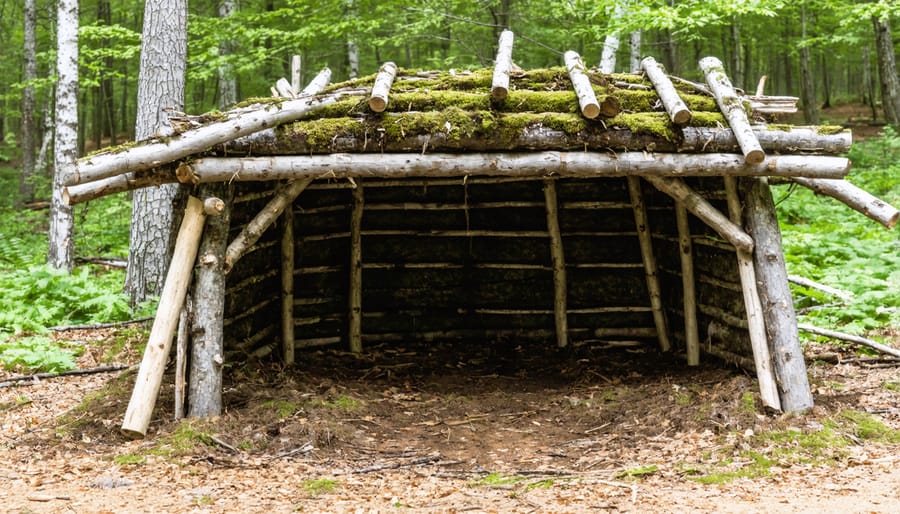
Fire Starting in All Conditions
Traditional Fire Starting
Starting a fire in the wilderness can mean the difference between comfort and crisis. The traditional bow drill method, while challenging, is a reliable technique that every outdoor enthusiast should know. Start by gathering dry materials: you’ll need a sturdy hardwood for your bow (maple works great), a softwood base board, and a spindle made from cedar or basswood.
Create your tinder bundle using dry grasses, bark fibers from cedar or birch trees, or the fuzzy seeds from cattails – all readily available in Ontario’s forests. Remember to keep your materials bone-dry; even slightly damp materials can derail your fire-starting efforts.
For your first attempts, practice in fair weather and bring backup matches. Position your baseboards on level ground, then use your bow to spin the spindle. Apply steady downward pressure while maintaining a consistent pace. When you see smoke, gently transfer your ember to your tinder bundle and blow steadily until flames appear.
Pro tip: In Ontario’s forests, birch bark makes excellent fire starter, and you can often find dry material under fallen logs even on rainy days. Always practice fire safety and check local fire regulations before starting any fire.
Modern Fire Starting
While our ancestors relied on friction-based fire starting, today’s outdoor enthusiasts have access to much more reliable tools. A quality waterproof lighter should always be your first choice – keep it in a sealed plastic bag for extra protection. As a backup, pack waterproof matches in a waterproof container, and consider carrying a ferrocerium rod (ferro rod) which creates hot sparks even when wet.
Here’s a pro tip: stuff your pockets with dryer lint before heading out. It makes excellent tinder and costs nothing! Cotton balls soaked in petroleum jelly also work wonderfully and can burn for several minutes. For a more eco-friendly option, collect birch bark, which contains natural oils that burn even in wet conditions.
Remember to prepare your fire site properly by clearing the area of debris and creating a fire pit with stones. Always keep your fire manageable and maintain a small stockpile of dry wood under a tarp or natural shelter. When in doubt, go smaller rather than larger – a modest flame is easier to control and often provides all the heat you need.
Safe Wild Edibles in Ontario
Common Edible Plants
Ontario’s forests offer a bounty of edible plants that can sustain you in survival situations. Cattails are nature’s grocery store – their roots, shoots, and even flower heads are edible and nutritious. Look for wild berries like raspberries and blueberries in summer months, but always be 100% certain of identification before eating any wild fruit.
Dandelions are easily recognizable and completely edible from root to flower. The leaves make excellent salad greens, especially in spring when they’re young and tender. Wild leeks (also called ramps) carpet the forest floor in early spring, offering a delicious wild onion flavor.
Remember the universal edibility test: touch the plant to your lip first, wait 15 minutes, then try a tiny taste and wait several hours before eating more. A good rule of thumb is “When in doubt, leave it out!” Some tasty and safe options include wintergreen leaves, which make a refreshing tea, and tender young fiddleheads from ostrich ferns in springtime.
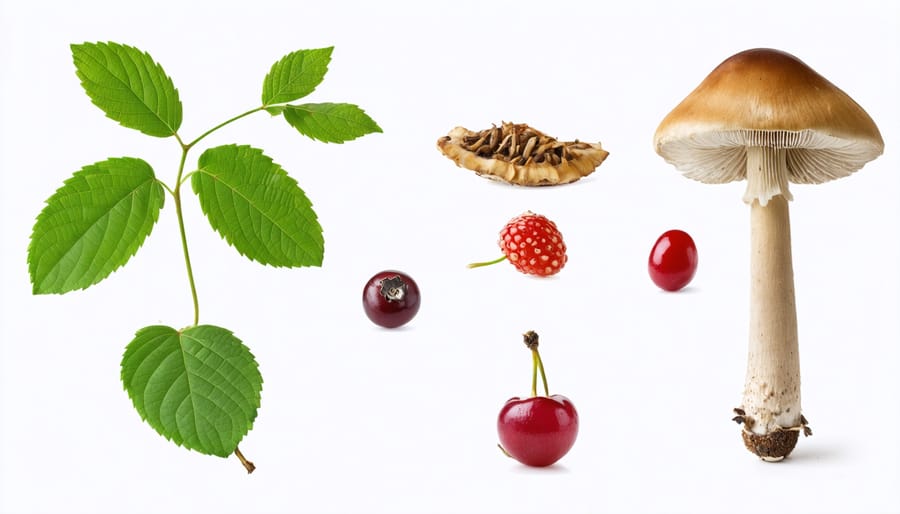
Foraging Safety Rules
When foraging in Ontario’s forests, safety should always be your top priority. Never eat any plant unless you’re 100% certain of its identification – there’s an old saying among foragers: “When in doubt, leave it out!” Always carry a reliable field guide and consider taking a guided workshop before venturing out alone.
Follow leave-no-trace principles by harvesting sustainably – take only what you need and never more than 10% of any patch. Watch out for poison ivy and ensure you’re foraging in permitted areas, away from roads or areas that might be sprayed with pesticides.
Keep a detailed log of what you collect and where you found it. Bring clean containers for collection and always wash your findings thoroughly before consumption. Remember that some edible plants have poisonous look-alikes, so start with easily identifiable species like dandelions or wild raspberries. If you experience any adverse reaction after eating wild foods, seek immediate medical attention.
Remember, mastering forest survival skills isn’t just about reading articles or watching videos – it’s about getting hands-on experience in a safe, controlled environment. Here in Ontario, we’re fortunate to have numerous outdoor education centers and wilderness schools offering survival skills workshops throughout the year. Organizations like the Ontario Wilderness School and local conservation authorities regularly host weekend workshops where you can practice fire-starting, shelter-building, and foraging under expert guidance.
Before heading into the backcountry, consider joining a local outdoor skills group or signing up for a certified wilderness first aid course. Many provincial parks also offer guided programs during summer months. The skills you learn could one day make the difference between a challenging situation and a life-threatening emergency. Stay curious, practice regularly, and always respect our natural spaces by following Leave No Trace principles. Your forest adventure awaits!

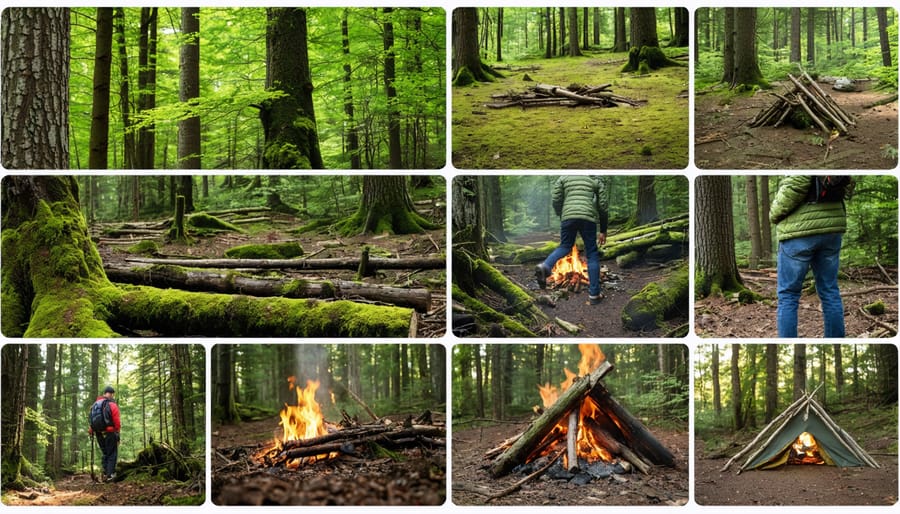

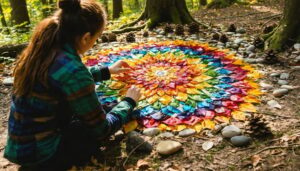

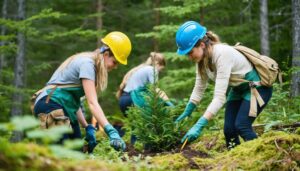

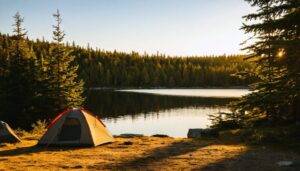
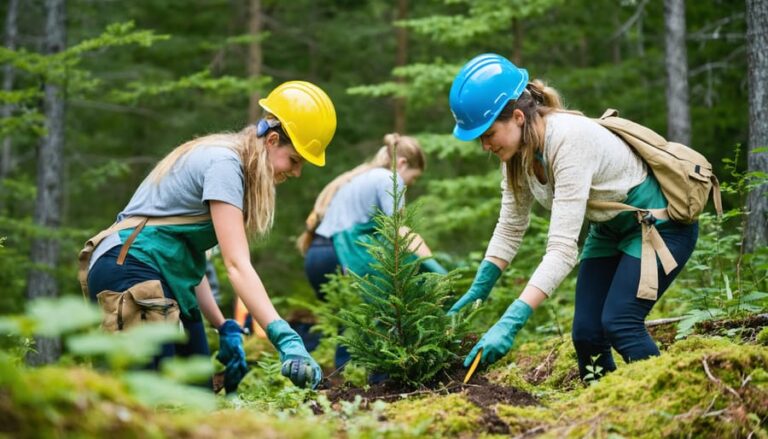
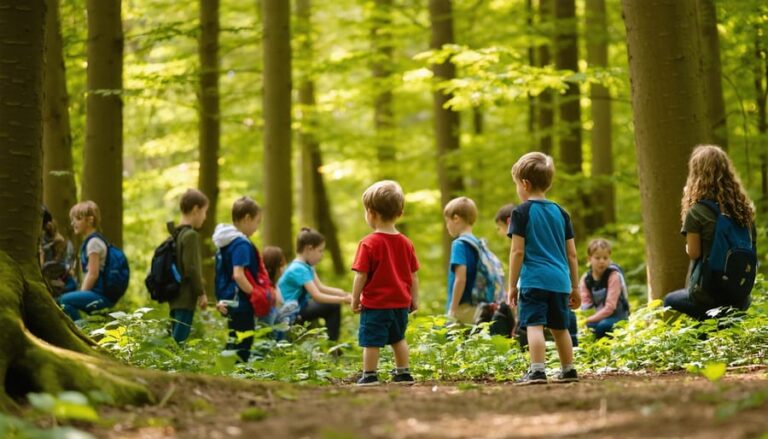
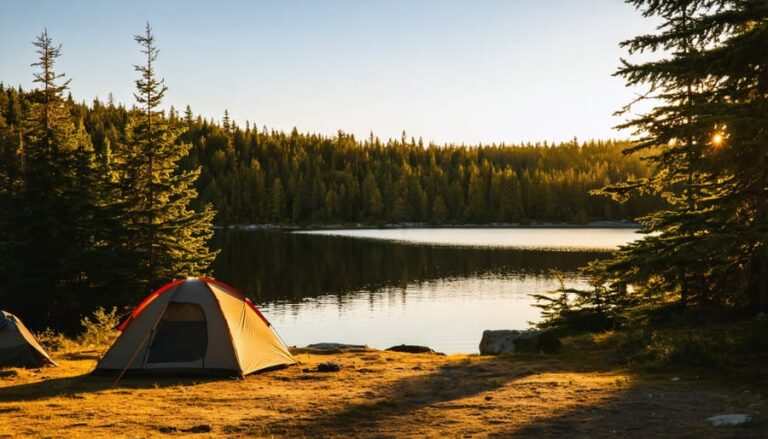
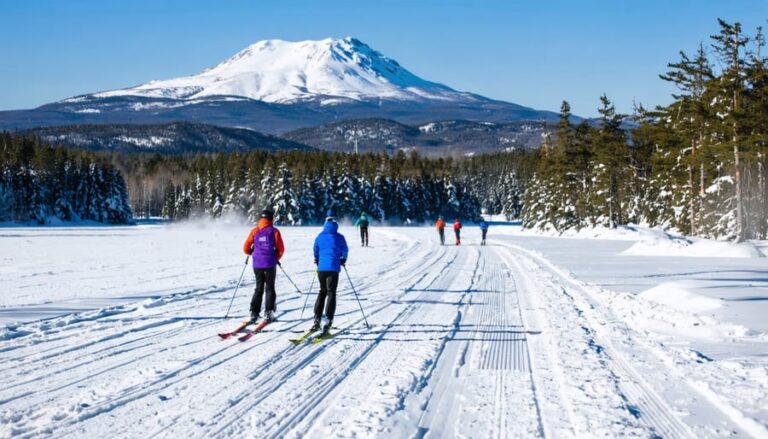

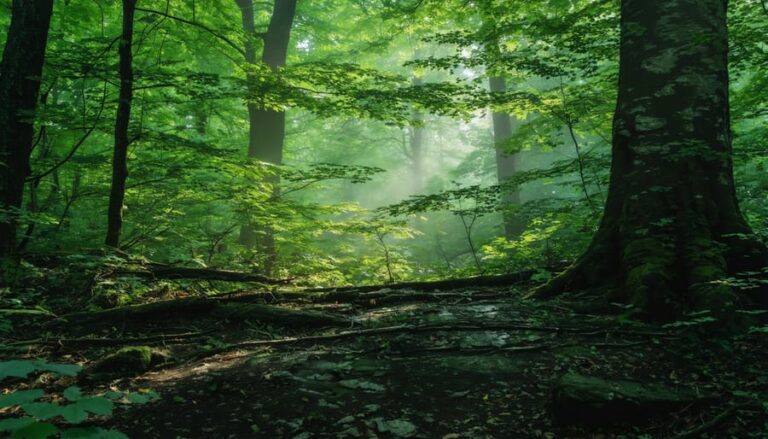
+ There are no comments
Add yours